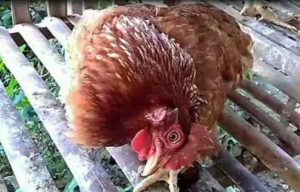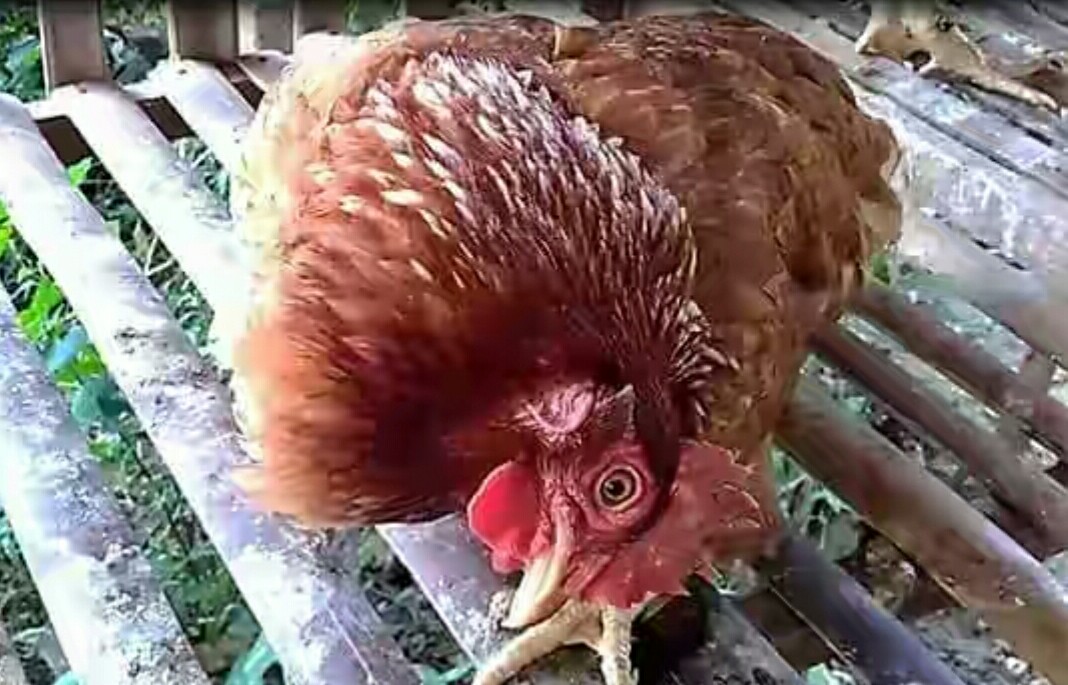Cure for Newcastle disease in chicken in Nigeria.
Newcastle disease is a disease of poultry caused by a virus of avian paramyxovirus serotype 1 (APMV-1) which has an intracerebral pathogenicity index (ICPI) in day-old chicks of 1.2 or greater.
Virulent virus can also be confirmed by the presence of multiple basic amino acids at the at the C-terminus of the F2 protein and F (phenylalanine) at residue 117, the N-terminus of the F1 protein If NDV virus unable to demonstrate the unique pattern of amino acid residues as explain above would require characterization of the isolated virus by an ICPI test.
According to the European Union (EU): “an infection of poultry caused by an avian strain of the paramyxovirus 1 with an intracerebral pathogenicity index [ICPI] in day-old chicks greater than 0.7”.
Based on the OIE definition, by containing multiple amino acids in the fusion cleavage site, the PPMV-1 isolates are vNDV and upon infection of poultry are defined as ND and are reportable to the OIE.
However, only some PPMV-1 cause signs of clinical disease in chickens, giving ICPI values of less than 0.7 but increasing in virulence after multiple passages in chickens.
Types
There are two types of Newcastle disease found worldwide virulence Newcastle disease virus (vNDV). It’s defined as Newcastle disease (ND) infection which meets criteria according to OIE for Newcastle disease. Common criteria are
The virus should have an intracerebral pathogenicity index (ICPI) in day-old chicks (Gallus gallus) of 0.7 or greater
NDV shows basic amino acids in virus structure. etc.
Common vNDV pathotypes are velogenic & Mesogenic strain. Low virulence Newcastle disease virus (LoDV). It’s defined as asymptomatic or NDV of low virulence will be referred to as loNDV. These types of NDV found in reservoir hosts or natural hosts. The common natural host is Pigeon. domesticated chicken, comments, Live Newcastle disease vaccine.
Symptoms:
Newcastle disease symptoms depend on factors that influence the incubation period. It also accounts for the variation in the clinical signs observed after infection. Clinical symptoms of Newcastle disease in other poultry species can be different and depend not only on the species but also on the specific breed of bird.

The comb may become blue as the bird becomes cyanotic in Newcastle disease. but hemorrhages are only seen with some isolates. Both eyelids are swollen preventing them from fully opening. in some cases, eyelids are crusted with a small amount of yellow material.
A close-range view of the feces shows both the green bile pigment as well as the white urates. These diarrheal feces is somewhat characteristic of Newcastle disease.
A large amount of watery diarrhea is a common finding in Newcastle disease. This diarrhea often has a greenish color due to the presence of bile.
Additionally, diuresis results in an excessive amount of white urates seen in these feces in Newcastle disease.
Mesogenic strains of Newcastle disease usually result in low or no mortality in 4-week-old chickens and will present with neurological signs such as torticollis, and paralysis.
Bilateral facial edema of the face is produced a square-shaped face. It is often the best appreciating from this vantage point in viscerotropic velogenic Newcastle disease.
In the severe cold season, There is bilateral swelling of the face which gave the head a “square” contour. Accumulation of mucus in the nasal cavity which is seen after pressing the nose.
Other symptoms are Respiratory symptoms, including mucus in the respiratory tract, which can be associated with both low virulence and high virulence NDV.
Well-vaccinated layers infected with Viseratropic Newcastle disease (vNDV) may only present with a decrease in egg production 1 week after infection, with the fewest eggs produced 2 to 3 weeks post-infection, after which the number of eggs produced will start to increase.
🔴Treatment
There is no specific treatment for ND; antibiotic treatment of secondary bacterial infections (eg E.coli) will reduce the losses.
🔴Prevention and control
Vaccination has proven to be a reliable control method. But ND is a notifiable disease, and in many countries the control is based on a
combination of obliged vaccination and stamping out in case of outbreaks. A wide range of live and inactivated vaccines are used in vaccination programs to prevent ND. “The new generation” of live recombinant HVT-vector vaccines give the opportunity for early hatchery vaccination and can be used to replace conventional ND vaccination, eliminating vaccination reactions and inducing life long protection
Vaccine:
Inactivated and live NDV vaccines formulated with NDV strains of are the most commonly administered vaccines. Usually prepared from egg-grown virus that is killed by treatment with formalin or β-propiolactone. Aqueous inactivated vaccines have been used but in recent years these have been superseded by those based on oil.
The immunogenicity of such vaccines may vary considerably with the type and ratios of the components of the vaccine. Both low virulence, such as B1 and LaSota virulent and avirulent viruses have been used as a source of antigen for inactivated vaccines.
From a safety aspect, viruses of low virulence would seem the most sensible source of antigen and have the added advantage of usually growing to higher titres in eggs.
Inactivated vaccines were first adjuvanted with aluminum hydroxide, but oil emulsions have proved to be more effective.
Formalin, beta-Propiolactone (BPL), and binary ethylenimine (BEI) are used to inactivate NDV.























